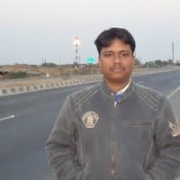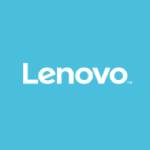How has it helped my organization?
Years ago, before BladeSystem, we had an EDM platform. We were working with IBM. We had IBM platforms. They consume much more energy. They are so big, so they take up a lot of space in the data center. At the time, when we migrated to BladeSystem, we reduced the amount of energy, amount of space, and we got more capacity. It's been very useful to us in that sense.
What is most valuable?
The solution has good scalability.
We can consolidate our learning infrastructure into just one chassis. You can have infrastructure scalability and capacity with memory. It is a great way to pull up together everything inside multiple platforms and in just one chassis.
Overall, its a very good product.
What needs improvement?
They are not selling BladeSystem anymore. The end of the sale of this platform was this year, 2020. Right now, if you try to buy a BladeSystem, you have to buy Synergy. I did try to buy some BladeSystem Generation 10 solutions in the USA. HP told me that they can sell this for the regular channel of HP still.
Right now, the Synergy platform has a management console that has a lot of options or features that help the administration of the platform. IN addition to that, this console cooling could integrate with the monitoring platform, so we could monitor integrity.
That said, this solution is discontinued, so any new features would only be useful on Synergy.
For how long have I used the solution?
I've been using the solution over the last year.
What do I think about the stability of the solution?
The solution is very, very stable. We haven't had any issues with it. It's quite reliable.
What do I think about the scalability of the solution?
The scalability is excellent, and it even takes up less space than, for example, IBM, and uses less energy.
I'm not sure, overall, how many users actually use the product in our organization.
How are customer service and technical support?
The technical support is pretty good. I would rate it eight out of ten.
I'm using the technical support from Synergy. At the end of the day, it's the same tech support. They're great. That said, sometimes it takes so long, as they often need to recheck many things. Still, they solve the problem if there is one.
Which solution did I use previously and why did I switch?
We used to use IBM. It was pretty bulky and took up a lot of space. It's hard to compare IBM to HP as IBM doesn't really show any good options.
How was the initial setup?
The initial setup is not complex. It is straightforward.
What about the implementation team?
I set up the solution myself. I didn't need the assistance of a consultant or integrator.
What other advice do I have?
We're just a customer.
We use the solution on Citrix platforms.
The BladeSystem compared with older solutions about energy and processor, offers more capacity and you can gain or minimize the amount of energy that you consume, which is super-helpful.
Overall, I would rate it nine out of ten.
One of the big problems that BladeSystem could look at is that systems like Microsoft Windows 2019, Linux, or Red Hat 8 demand a lot of RAM memory. There's no adaptable support. The more gigabytes or more processors that the actual operating system has, the better. With Synergy, and the power of Dell, hopefully, there will be support and adaption to the new necessities.
Which deployment model are you using for this solution?
On-premises
Disclosure: My company does not have a business relationship with this vendor other than being a customer.










